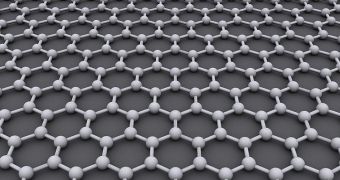An international collaboration of experts has demonstrated that photons, the basic particles that make up light, can be used in a controlled manner for changing the electrical properties of graphene.
This is one of the most interesting and studied new materials today. It was discovered only half a decade ago, but the University of Manchester group that first obtained it already won the 2010 Nobel Prize in Physics for their achievement.
The two researchers were recognized with the highest honor in science because their peers recognized the vast number of applications that graphene could be used for.
This material is, in essence, a bi-dimensional sheet of carbon atoms, that are tied together in a honeycomb-like structure. When pure, the compound has a number of chemical and physical properties that make it especially fit for use in modern electronics.
One of the things that really stands out about it is that it has the electrical conductance of copper, while at the same time being the strongest material known to man. Experts hope to use it primarily to replace silicon in computer chips, sensors, solar cells, and others.
The new study, which appears in a paper called “Non-volatile Photo-Chemical Gating of an Epitaxial Graphene-Polymer Heterostructure,” is published in the January 7 issue of the esteemed Journal of Advanced Materials.
In it, researchers from the National Physical Laboratory (NPL), in the United Kingdom, and colleagues from a number of research institutes and groups around the world show how light can be used to change the electrical properties of graphene.
Now that scientists master this ability, they will find it easier to produce graphene-based optoelectronic devices and highly sensitive sensors, the group reveals. This is only possible if the material is combined with particular polymers.
In some very specific combinations, light can modify the graphene-polymer mix so that it exhibits varied electrical traits. This opens the way to a new generation of optoelectronic devices, experts say.
In addition to NPL researchers, scientists from the University of Technology, in Sweden, the University of Copenhagen, in Denmark, the University of California in Berkeley, the Linköping University, in Sweden, and the Lancaster University, in the UK, were also involved in the research.

 14 DAY TRIAL //
14 DAY TRIAL //